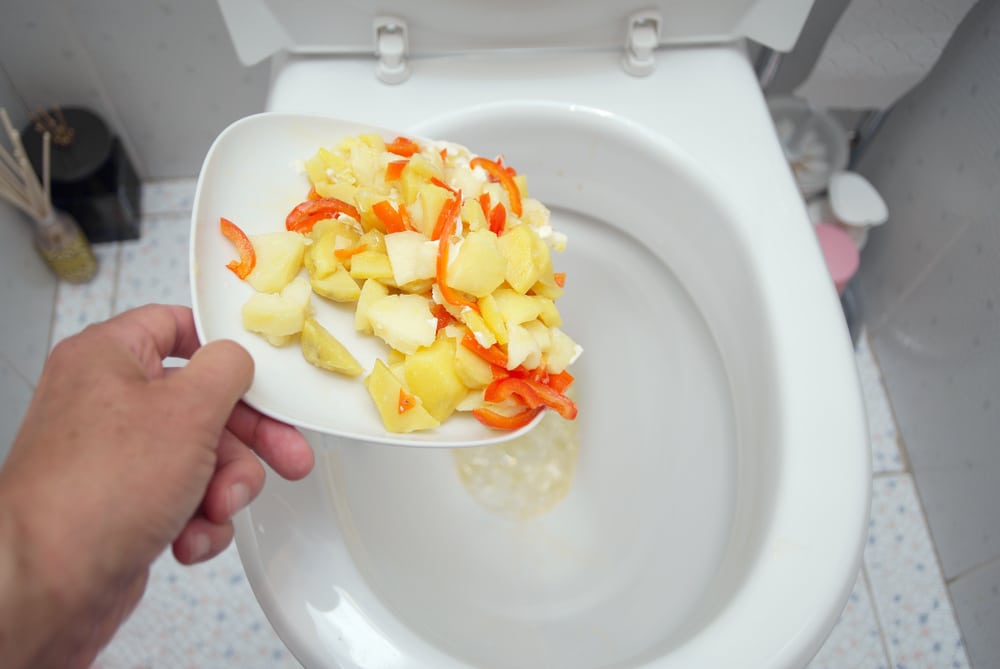Is it Possible to Dispose of Food in the Toilet?
Is it Possible to Dispose of Food in the Toilet?
Blog Article
Every person is bound to have their private piece of advice in relation to Think Twice Before Flushing Food Down Your Toilet.

Introduction
Many people are frequently faced with the dilemma of what to do with food waste, especially when it concerns leftovers or scraps. One common inquiry that emerges is whether it's okay to purge food down the toilet. In this article, we'll look into the reasons individuals could think about purging food, the repercussions of doing so, and alternate methods for appropriate disposal.
Reasons people might take into consideration flushing food
Absence of understanding
Some people might not know the possible harm caused by flushing food down the bathroom. They might wrongly think that it's a safe technique.
Convenience
Flushing food down the toilet may seem like a fast and simple remedy to disposing of unwanted scraps, specifically when there's no neighboring garbage can readily available.
Idleness
In some cases, individuals may merely choose to flush food out of large negligence, without taking into consideration the effects of their actions.
Effects of flushing food down the commode
Ecological impact
Food waste that ends up in rivers can add to contamination and harm marine ecological communities. Additionally, the water made use of to flush food can stress water sources.
Pipes concerns
Purging food can lead to clogged pipelines and drains pipes, causing costly pipes fixings and aggravations.
Sorts of food that need to not be flushed
Fibrous foods
Foods with fibrous textures such as celery or corn husks can obtain entangled in pipes and trigger blockages.
Starchy foods
Starchy foods like pasta and rice can absorb water and swell, leading to obstructions in pipelines.
Oils and fats
Greasy foods like bacon or cooking oils need to never be purged down the commode as they can solidify and trigger clogs.
Proper disposal techniques for food waste
Making use of a waste disposal unit
For homes equipped with garbage disposals, food scraps can be ground up and purged through the pipes system. Nevertheless, not all foods appropriate for disposal in this fashion.
Recycling
Certain food product packaging materials can be recycled, reducing waste and reducing environmental effect.
Composting
Composting is a green method to throw away food waste. Organic products can be composted and used to improve soil for gardening.
The value of correct waste monitoring
Minimizing environmental harm
Appropriate waste management techniques, such as composting and recycling, assistance lessen pollution and preserve natural resources for future generations.
Shielding plumbing systems
By avoiding the method of flushing food down the toilet, house owners can prevent expensive pipes repairs and keep the integrity of their plumbing systems.
Conclusion
Finally, while it might be alluring to purge food down the commode for ease, it's important to understand the possible repercussions of this activity. By embracing appropriate waste management techniques and taking care of food waste responsibly, people can contribute to much healthier plumbing systems and a cleaner setting for all.
THINK TWICE BEFORE FLUSHING FOOD DOWN YOUR TOILET IN FALLBROOK CA
Let’s be honest, we’re really supposed to be tossing rotten or leftover food in the compost bin or trash can. But many people like to place scraps of food down the drain of, say, their kitchen sink. That’s why the garbage disposal was invented: so we can continue to place certain foods down the drain without clogging our drain in the process. Smart.
But not all of us have the luxury of having a garbage disposal installed. So, you might continue to shove food down your sink drain anyway – or worse: you might flush them down your toilet! If you’re guilty of doing the latter, you’re going to want to stop, and here’s why:
Toilet Drains Aren’t Designed to Handle Food!
There’s your answer: food just doesn’t belong in your toilet. It may seem like your toilet drain is wider than the drains of your sinks, but truth be told, that isn’t actually the case. The narrower pipes of your toilet leave your plumbing at risk for clogging if you do happen to flush your food. In addition, food doesn’t break down as quickly that toilet paper and human waste do. In turn, this leaves your toilet at risk for a nasty clog.
Although a flush of a tiny pinch of food every now and then isn’t going to completely damage your toilet, there are certain foods that should absolutely not be flushed in your toilet at all. These include starchy foods like mashed potatoes, grains, hard pieces of food that are slow to break down, and fats and oils.
The latter categories of food are particularly problematic as they may harden, expand as they absorb water, break down slowly in your system, or generally create the perfect obstruction with their gelatinous composition. These are all things you don’t want in your plumbing system!
Experiencing a Toilet Clog?
Nobody’s perfect, and we all make mistakes. Sometimes one of the mistakes people make is flushing food down their toilet and later realizing that it wasn’t the best thing to do once they see that their toilet is now clogged. Uh-oh!

Do you appreciate more info about Flushing Food Down the Toilet?? Give a short review down below. We'd be pleased to find out your thoughts about this blog entry. In hopes that you visit us again before long. Loved our write up? Please share it. Let somebody else discover it. Thanks for going through it.
Call Today Report this page